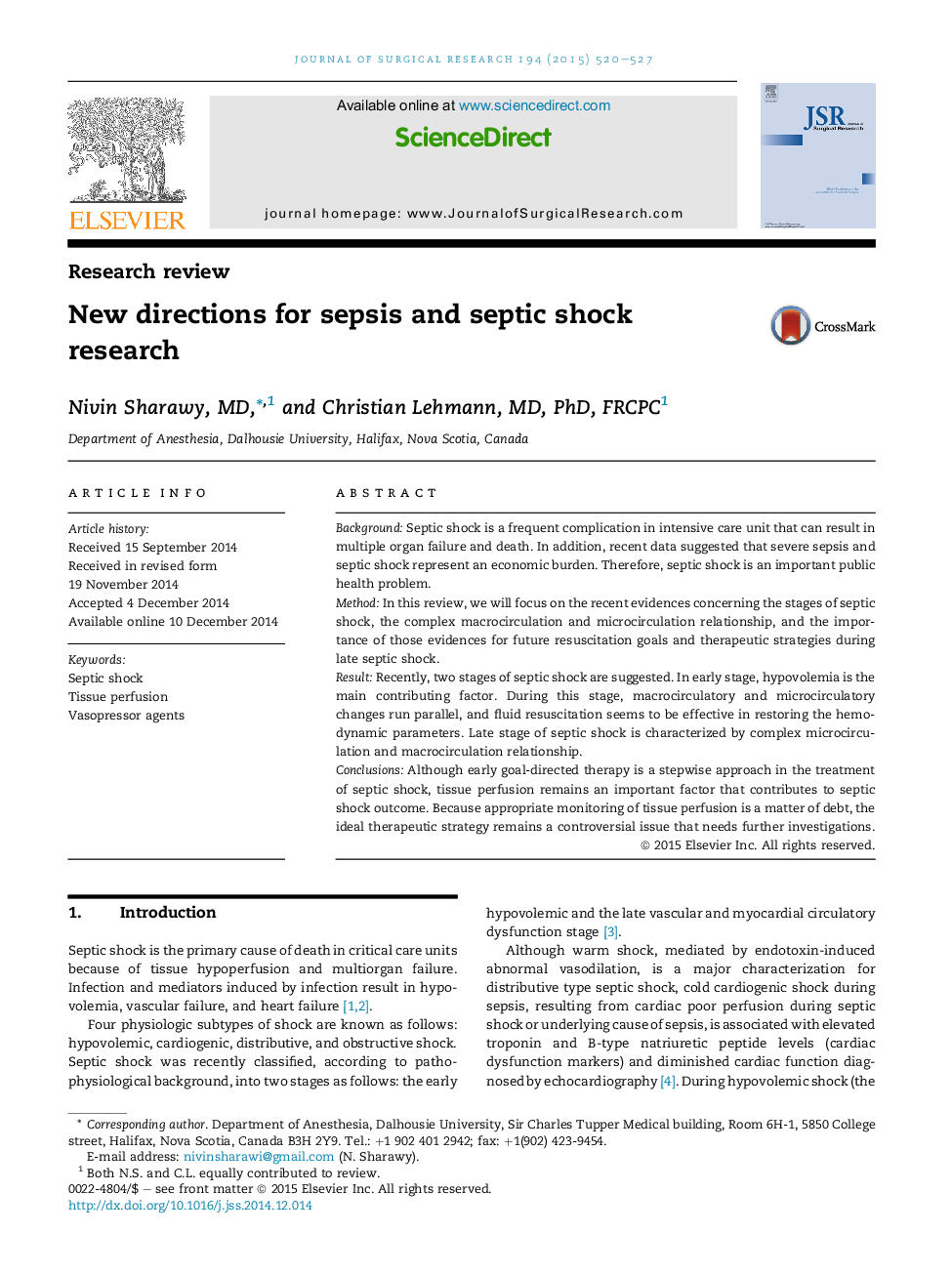| Article ID | Journal | Published Year | Pages | File Type |
|---|---|---|---|---|
| 4299453 | Journal of Surgical Research | 2015 | 8 Pages |
BackgroundSeptic shock is a frequent complication in intensive care unit that can result in multiple organ failure and death. In addition, recent data suggested that severe sepsis and septic shock represent an economic burden. Therefore, septic shock is an important public health problem.MethodIn this review, we will focus on the recent evidences concerning the stages of septic shock, the complex macrocirculation and microcirculation relationship, and the importance of those evidences for future resuscitation goals and therapeutic strategies during late septic shock.ResultRecently, two stages of septic shock are suggested. In early stage, hypovolemia is the main contributing factor. During this stage, macrocirculatory and microcirculatory changes run parallel, and fluid resuscitation seems to be effective in restoring the hemodynamic parameters. Late stage of septic shock is characterized by complex microcirculation and macrocirculation relationship.ConclusionsAlthough early goal-directed therapy is a stepwise approach in the treatment of septic shock, tissue perfusion remains an important factor that contributes to septic shock outcome. Because appropriate monitoring of tissue perfusion is a matter of debt, the ideal therapeutic strategy remains a controversial issue that needs further investigations.
